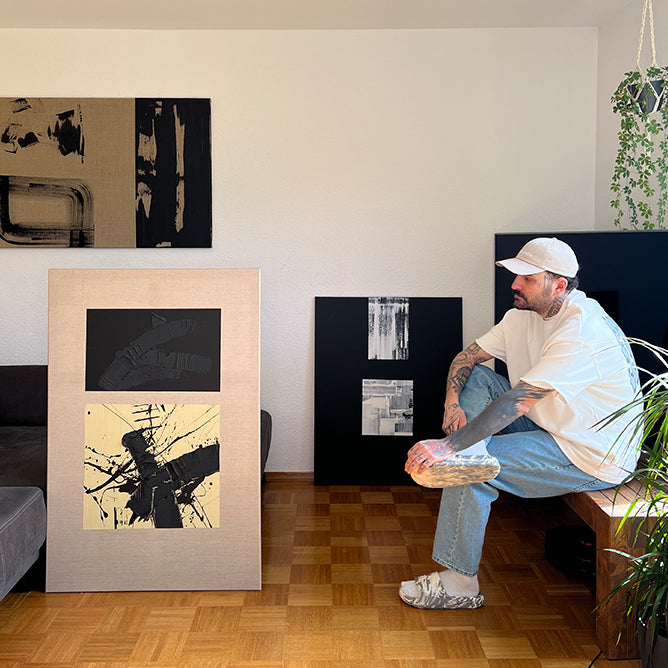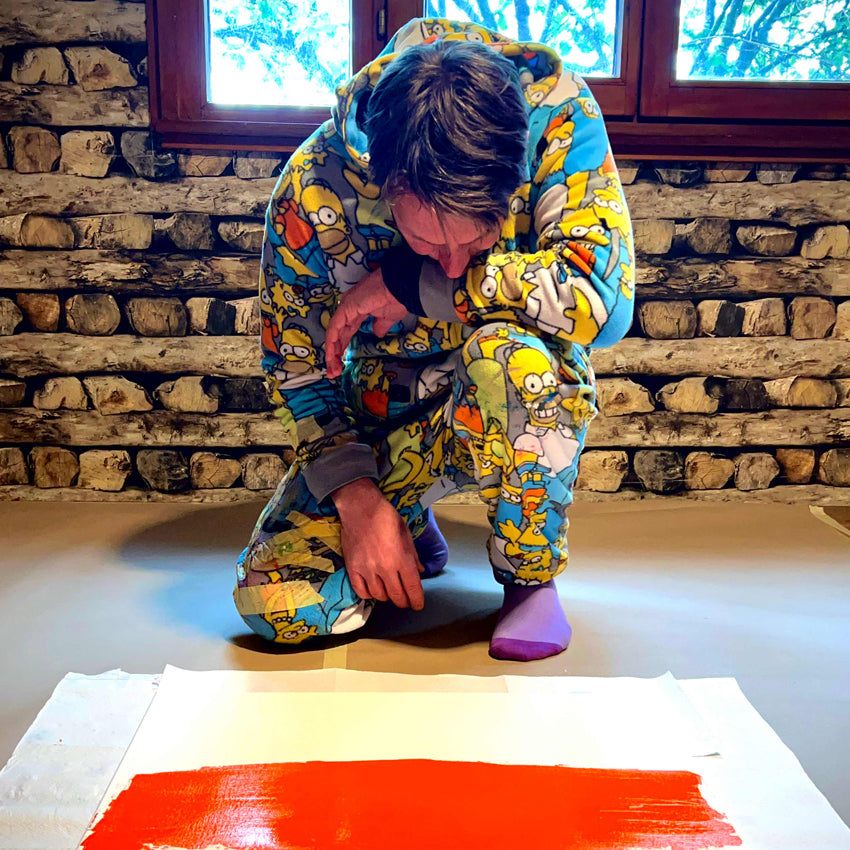The self-taught artist Alice Anders was born 1981 in Germany. She studied art history at the Braunschweig University of Art (HBK). Her studio is located in Braunschweig, Germany.

How did you get into art?
It's a bit strange to say, but it's true, and you hear it echoed by other artists in similar ways: I was always into art. Even in my childhood, I painted and drew passionately. But at some point, I just stopped and didn't pick up a pen or brush for a long time. However, I believe that when you hear an inner voice telling you that you want or even need to paint, an inner voice that says: Create art! Then you carry it within you even in times when you're not doing anything – but you will surely find your way back eventually if you learn to trust yourself. Because this voice accompanies you, it urges you from within. Sometimes in the past, I felt a little guilty for not painting. It was as if I was suppressing something essential within me, not letting a part of me out. And then it bursted out of me again. It was a very emotional moment! I realized at that moment that a certain feeling towards the outside world had become too overwhelming to cope with using familiar strategies in everyday life. I needed a different form of expression to deal with it. I took a canvas and some colors and just started! It was raw, wild, impatient, and pure. I was surprised by the result because my inner voice was clearly speaking through the artwork. It guided my hand, no external form was significant that I wanted to mimic. In the past, I was striving to depict nature or an idea very figuratively. But that desire for perfection from the past currently demands too much patience from me. Therefore, since 2023, I paint abstractly. Through this artistic practice, I encounter myself and my feelings in a whole new way.
How would you describe your style? What makes your work special?
If there's anything special to say about my art, it's up to others to express it and judge my creations. I can't judge whether they're special. I can say quite impartially: My art exists because I exist. And I exist only once, at least to my knowledge.
And my personal theme is resistance and overcoming resistance. Painting, for me, is resistance in itself, just through the very physical process. When I use my hands, I feel the resistance of the surface I want to paint. I have an aversion to wearing gloves when painting because I want to feel the paint, the surface, the tools on my body and skin. This allows me to connect with my inner resistances and actually touch what is hidden or something immaterial: an emotional process, a feeling, an emptiness, a reaction to an interpersonal incident in my immediate environment or to a political or social event in the global community, in our global village, where almost everything is interconnected through digitalization and captured in digital images. But the digitialization also leads to a loss of connection. After real resistance, you sometimes have to search, there is hardly any real opposition anymore, rarely a haptic experience. Even love and sexuality have in many ways transferred to the virtual world. But humans still need real resistance to feel themselves. I feel resistance when painting, I want to make resistance visible and tangible as its own energy. In this way, I also take away some of the destructive power of resistance. For example, if the behavior of another person triggers anger in me and I want to resist, meaning to go into direct confrontation, it could lead to conflict and war, you might hurt others or especially yourself. With art, I can use this resistance in other, much more constructive ways and channel anger and rage, for example. Art is a vent for resistance! Art helps to cope with the unchangeable.

How do you go about developing your work?
I usually work on several paintings simultaneously, although only one is in the foreground. But I have to turn away from this piece repeatedly, do something else, so as not to push too hard and force a seemingly planned outcome. Sometimes I feel too much energy to put it into just one channel. I have to scatter myself and then come back together again. It's a lot about emotional detachment and flow! When it feels right, I also like the painting.
As for the technique: at the moment, I mainly paint abstractly with acrylics on canvas, wood, and paper. The formats tend towards bigscaled art, the tools are classic brushes of various shapes, my bare hands, and any tool that spontaneously comes to my hand. The element of surprise is welcome. Sometimes I'm annoyed by where spontaneity has led me, but so far, this challenging feeling has dissolved into satisfaction during the further working process on a painting. There it is again: Resistance, which usually has to be overcome through letting go.

Who or what influences you?
As a former student of art history at Braunschweig University of Art (HBK), I am most likely also influenced, quite unconsciously, by art history and everyday encounters with students of fine arts. To find that out, I would have to ask the art historian within me, but I'm answering here as an artist. And as an artist, I know that I consciously allow myself to be inspired by my feelings. These emotional stages merge in artistic representation with various external stimuli. I am a very visual person, meaning I am inspired by views that I spontaneously encounter. These could be film stills, nature or photos that suddenly lose their figurative value for me. People and objects then lose their real reference and become abstract forms and compositions in my gaze, which inspire me to create my paintings. However, during the painting process, I often diverge from these models. I am currently unable to follow a plan. Then painting becomes intuitive and physical again, a craft without a preliminary sketch. I also enjoy being inspired by the artist community on Instagram. It's great to peek over the shoulders of others and try out new techniques and tools. However, I could and would not want to imitate anything, no matter how much I wanted to. My own style ultimately takes the lead, and I'm excited to continue developing it further.
Make us curious. What are you planning to do next?
"I am pleased to announce that I will have my first exhibition on June 7th, 8th, and 9th, 2024. You can visit me and my studio at Frankfurter Straße 268 in Braunschweig, Germany. On these days, many artists from my hometown will be opening their spaces, too. Here is the link to #Kunsttour24. You'll find me under my lucky number 13. But wait, do you notice something? Yes, I must admit that my real name is Stefanie Krause, Alice Anders is my artist name. When I chose it, I had the German saying 'Alles anders' (Everything different) in mind. Indeed, I aim to do things differently than before. Because normally, I am someone who likes to plan, who doubts, who overthinks, and therefore prefers to secure everything, but to be honest, I signed up for this exhibition when I didn't even have enough works to exhibit. Perhaps I wanted to convince myself that I should do it. So I am, and I would be delighted if many of you would like to come and see my art. It's worth doing things completely differently sometimes. It's all different, so says Alice Anders: Welcome, come on in!

Learn more about the artist:




